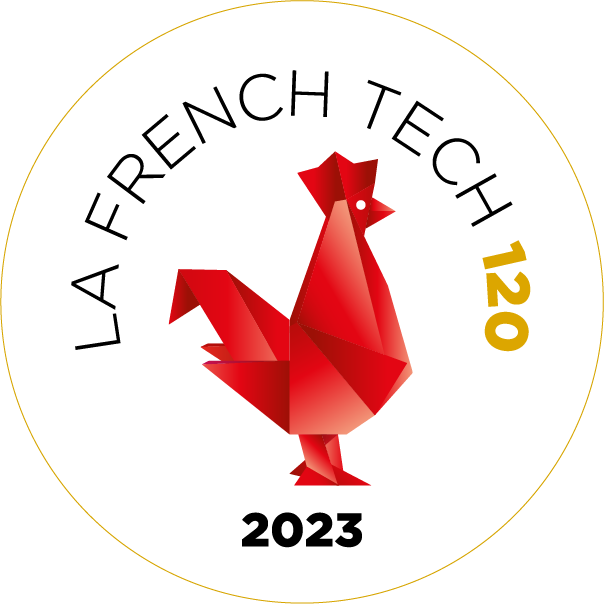Home > Newsletter > Constell'Actions September 2023

Constell'Actions n°2
September 2023
- Proto-Flight Model passes TVAC tests
- Successful testing of command/controm sequences between Flat Sat and Control Center
- Integration of solar panels on the Proto-Flight Model
- Comat delivers dual UHF-S flight antenna
- Two more operationnal Ground Remote Stations (GRS) for the Kinéis constellation: in Gabon and New Caledonia

KINÉIS CONSTELL’ ACTIONS
Kinéis Constell'Actions is the monthly newsletter dedicated to the deployment progress points of the Kinéis connectivity system for the Internet of Things (IoT).
In just a few months' time, the first launch, scheduled for spring 2024 in New Zealand, will initiate the orbiting of the constellation of 25 nanosatellites. This summer, in Toulouse, at our partners' and service providers' sites, and around the world, our teams continued their efforts to make Kinéis' human and space adventure a success.
Welcome on board and enjoy your reading!
PROTO-FLIGHT MODEL PASSES TVAC TESTS
The Kinéis and Hemeria teams (in charge of development, platform manufacturing and satellite integration) carried out TVAC (Thermal VACuum) tests on the first satellite, called Proto-Flight Model (PFM), at Thales Alenia Space (TAS) in Toulouse. The aim of these tests was to validate the satellite's functions and performance under environmental conditions as close as possible to those encountered in orbit (space vacuum, extreme temperatures).

The Proto-Flight model Kinéis in the vacuum tank, at Thales Alenia Space (TAS)
To simulate the satellite's space environment in flight, the teams placed it in a hermetically sealed tank in which liquid nitrogen flowed through panels to achieve the targeted thermal characteristics (-20°c / +40°c), in addition to obtaining the vacuum by pumping for up to 6 hours.
For these tests, the engineers worked on 2 satellite qualification objectives:
1) Verification that the complete satellite, both platform and payload, is operating correctly at minimum and maximum temperatures, as well as during transitions (transfer from hot to cold and vice versa), including the correct activation of the solar panel stacking mechanisms*,
2) Validation of the satellite's thermal model (a numerical engineering model used to simulate the satellite's thermal behavior in orbit), verifying that the model's results were in line with test reality.
The results obtained validated this major stage in the satellite's development. All the planned tests have been carried out, and the correspondence with the results of the thermal model is very good. The satellite and all the interfaces between on-board equipment are now fully operational.
Next step: radiofrequency tests in anechoic chamber.
*stacking mechanisms: Operation consisting in folding a satellite structure or appendages to reduce its size, in particular to house them under a launcher fairing.
SUCCESSFUL TESTING OF COMMAND/CONTROL SEQUENCES BETWEEN FLAT SAT AND CONTROL CENTER


The Hemeria platform, Kinéis-CNES onboard and Kinéis ground teams met for a week at Kinéis and Hemeria, to test a configuration of the satellite known as the "Flat Sat", a "flat" version of the satellite with no structure, in order to validate key functions in the command/control chain from ground resources (ground station, mission center, control center).
These tests, which represented a crucial step in the system qualification process, enabled us to carry out the following tasks:
- Loading the flight software for the platform and payload (Argos instrument) to check Kinéis' ability to correct the software in the event of a problem, once the satellite has been launched,
- Checking the satellite's behavior when the on-board computer is restarted (in the event of anomaly detection),
- Activate/deactivate on-board equipment (wheels, star tracker, propulsion power system),
- Checking remote controls for deployment of satellite appendages (solar panels, S-band antenna, Argos antenna (UHF), AIS antenna),
- Implementation of secure communication links with the satellite (cryptographic layer),
- Electrical passivation, i.e. discharging the batteries to prevent them from exploding during re-entry into the Earth's atmosphere at the end of the satellite's life, to meet LSO* requirements.
Next step: continued testing of the Proto-Flight Model (PFM) in October
*SOL: Space Operations Law. Law no. 2008-518 of June 3, 2008 on space operations is a French law dealing with private operations in space. It defines the status of space operator, the ensuing obligations and the penalties incurred. It gives new responsibilities to CNES. Gradually implemented between 2010 and 2020, it has been fully applicable since 2021 to all satellites launched by France. It aims to limit the amount of space debris in low-Earth orbit.
INTEGRATION OF SOLAR PANELS ON THE PROTO-FLIGHT MODEL
The solar panels were integrated on the Proto-Flight model and then deployed to check their correct operation. The teams prepared the satellite for mechanical vibration testing at Mecano ID (transport and setup).
Next step: vibrations mechanics tests
COMAT DELIVERS FIRST DUAL UHF-S FLIGHT ANTENNA

The antenna system is one of the special features of Kinéis nanosatellites, in particular the self-deploying UHF-S antennas developed by CNES R&D and co-designed by Cobham Aerospace Communications and Comat, a Toulouse-based company.
The latter has just delivered the first dual UHF-S antenna (or dual-frequency antenna) in its final flight configuration, which will be installed on one of the 25 nanosatellites in the constellation.
The size of the nanosatellites required the design and development of a new concept in small, foldable antennas. The dual UHF-S antenna meets this requirement, consisting of a rigid S-band antenna (designed and produced by Cobham), topped by a foldable UHF antenna (co-designed by Cobham and Comat). The whole system has been qualified in terms of launch conditions, performance requirements that are particularly high for this type of small messaging collection mission, and compactness.
The deployable UHF antenna enables messages to be transmitted and received by terrestrial terminals (devices). Its innovation lies in its 4 rigid metal strands made of copper beryllium (a hard, light metal) resembling a DNA chain, which perform 2 functions: radiating radio frequencies and playing a role in the antenna's deployment mechanism, notably in the spacing between the 10 rings of its structure.

The S-band antenna communicates with the 19 ground stations of the Kinéis system to relay mission data collected on board. The remaining 24 antennas will be delivered progressively between now and the end of the year.
TWO MORE GROUND REMOTE STATIONS (GRS) OPERATIONAL FOR THE KINEIS CONSTELLATION: IN GABON AND NEW CALEDONIA
Over the summer, Kinéis teams continued to deploy Ground Remote Stations (GRS) around the world. The first was installed on the African continent, in Gabon, and the second in Oceania, on the French archipelago of New Caledonia.
Kinéis chose the Gabonese site of the Ariane Libreville - N'Koltang telemetry station, an ESA-CNES site which monitors launchers for the positioning of geostationary satellites. Installation of the antenna and radome took place from July 3 to 12, with two days' downtime to enable space agency teams to work under optimum conditions on the final Ariane 5 launch. With the Libreville GRS, Kinéis now has 2 ground stations on this continent, along with the one in South Africa.
Watch the timelapse of the GRS installation in Gabon

The second ground station in July was deployed in New Caledonia, the second GRS in the Pacific after the one in French Polynesia last June. The site survey took place in March 2022 to ensure the site's conformity: configuration of the site, clear horizon, cleanliness of the radio environment with regard to possible frequency interference for the S-band, inventory of electrical installations and internet access.
Installation of the two antennas and their radomes took ten days, and was carried out on the heights of the Météo France site in Nouméa, which was difficult to access for transporting the equipment. Kinéis benefits from a partnership with the French National Meteorological Agency for the deployment of its GRS in the French overseas territories (French Guiana, Reunion, New Caledonia and French Polynesia).
After technical installation, the teams proceeded with UHF antenna tests (ground-satellite uplink) and satellite-ground link tests (S-band dishes). Tests are currently continuing from Toulouse, confirming that the ground station is operating smoothly.


To date, 10 sites equipped with Kinéis ground stations have been installed worldwide.
Next deployment: Toronto


À propos
Créé en 2018, Kinéis est un opérateur IoT satellitaire.
© kineis - IoT everywhere - 2023
Nous contacter
Adresse
11, rue Hermès
31520 Ramonville-Saint-Agne
France
Téléphone
05 61 39 47 00
Liens
FAQ
Espace presse
Newsletter
Actualités
Politique de confidentialité
Politique de cookies
Plan du site
Restons connectés






